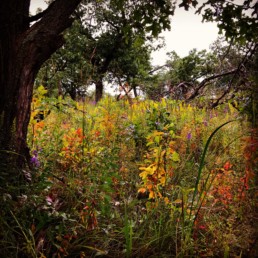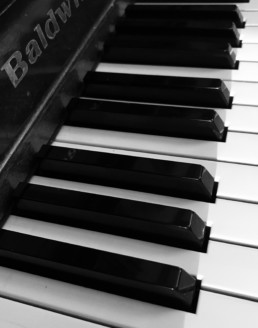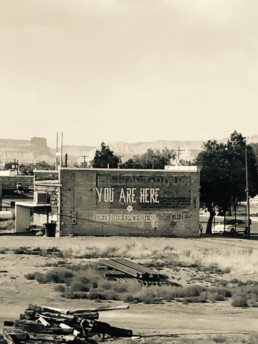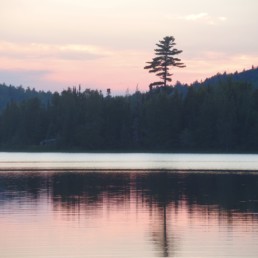The elm trees are raining yellow leaves into a gilded September morning, but the full fire of autumn has not yet arrived. The days dance wildly between dark, chilly dawns and sun-toasted afternoons. I harvest a few last offerings from the garden and then lovingly watch it go to seed. September is letting go and taking stock – gazing outward and coming home.
Middle spaces and shoulder seasons are both beautiful and terrifying. Spring and fall bring opulent colors, turbulent storms, or both. The seasons of adolescence and middle age may vibrate with quiet brilliance or reshape an entire landscape. They are seasons of holding tight and moving on; staying the course and changing direction. The subtle and wrenching beauty in these transitions is lost if my gaze is too firmly fixed on the past or anxiously buried in questions about the future.

September is letting go and taking stock... gazing outward and coming home.
I try to attend to liminal spaces that are soft and pliable, the ones that show me how to breathe in moments one at a time. I hope to acquire some kind of muscle memory, like rehearsing scales before learning a performance piece. If I become more comfortable with small transitions, will I also learn something about navigating a larger journey and still enjoying the view?
The practice of presence is both arpeggio and rest, movement and pause. I try to engage this paradox in some way as I physically move through the world. Although day-to-day urban commuting is rarely meditative, slower types of travel like riding the rails or hiking a trail allow me some small experience of suspended animation. They acknowledge a destination but also honor the journey itself.
The practice of presence is both arpeggio and rest, movement and pause.

We began taking family train trips several years ago as a way to see the landscape rather than just fly over it. While we also enjoy road trips, long-distance car travel requires the kind of time and endurance that is not always available. It takes at least two days from our home near Chicago to arrive at most destinations in the West on the train. For this we will splurge on a sleeping car, which puts the journey itself on equal footing with the destination. There is always a bit of giddy excitement as we settle into our seats and slowly pull away from the station, passing and leaving familiar landmarks behind. We cross the Mississippi River around sunset, sometimes while eating dinner and gazing out the wide windows of the dining car. Later in the evening we play cards at a table in the observation car, the last rays of sun disappearing into small towns that emerge like dreams from the endless prairie. As our family nestles together in our curtained bunk, I drift off as the train rocks and heaves, impossibly content under a scratchy blanket as we hurtle through the inky darkness. I wake up early and follow the smell of jet-fuel coffee perking in a silver urn, drinking it as dawn breaks over the western prairie, amazed at how vast it all is. The day will repeat. I have nowhere to go but here.

The day will repeat. I have nowhere to go but here.
Hiking is another activity that both opens up time and space and exquisitely focuses the moment. Some trails have an endpoint destination, usually an overlook or mountain top or other must-see destination. Others have no out-and-back but instead meander and circle back on themselves. Wallace Stevens wrote, “Perhaps the truth depends on a walk around a lake.” The journey and the destination are the same, and that is the whole point. While one part of my brain is focused on not tripping over rocks and tree roots, another part is wholly tuned in to beauty. Every step allows me to quiet down and listen up for the emergence of a small, still voice. I wander in the wilderness and the burning bush is revealed.
“Perhaps the truth depends on a walk around a lake.”
-- Wallace Stevens

A wise friend once described a liminal space as the time when a trapeze artist must let go before catching the bar on the other side. That moment in the air may be exhilarating or terrifying — probably both. I can practice on the small moments in places like trains and hiking trails, to enjoy the view even if I am suspended in mid-air. Perhaps then the real transitions will be a little less frightening and I will see the wide and expansive beauty of the space in between.